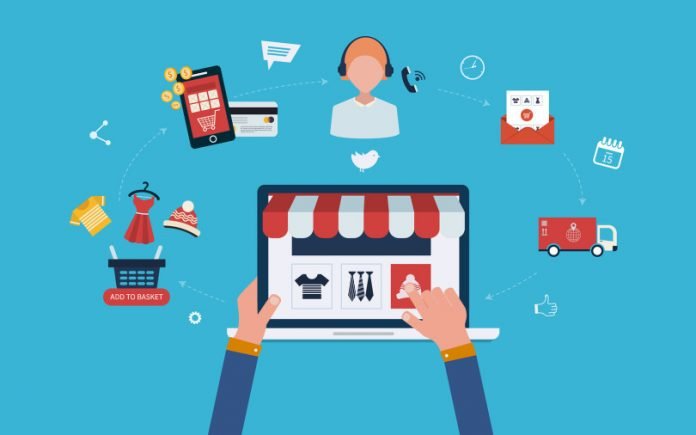5 Global e-Commerce Trends in 2017
Day by day, the number of people shopping online grows at a frantic pace. Especially it concerns the young generation and people at the age of 25-35, and they are the most payable audience. This means that retail should cover e-commerce and shops not represented in the Internet will simply disappear.
Armed with smartphones, tablets, computers, users expect online shopping to be fast, simple and convenient. We offer you 5 main e-commerce trends in 2017 which companies must consider in order to be confident in their sales growth.
- The Number of Mobile Users Is Growing, but They Are Still Not Convertible
Nowadays, mobile traffic makes for more than half of all Internet traffic and it keeps growing. Many users are still unhappy with the experience of buying from mobile devices. More than a half of online shoppers prefer to shop from a PC because they are not sure about protection and privacy when shopping with a smartphone or tablet. A new study from Wolfgang Digital confirms this statement: the company analyzed 80 million web sessions and data related to the receipt of online revenue for a total of 230 million euro. The study showed that although 59% of all sessions of online stores were made from tablets and mobile phones, it brought only 38% of the revenue. Mobile users go to the site to study the future purchase and decide which products they want to buy. Therefore, they are very important for the store and should never be ignored. Internet marketers simply have to gently push users of mobile browsers to complete the transaction. for example, send a letter to the customer to show the products viewed from the mobile device.
- Usage of Artificial Intelligence for Smart Forecasts
This trend is much more difficult to predict because it is really something new, not a continuation of developed-over-several-year trends. The increase in the amount of data available to marketers has expanded the opportunities for targeted work with clients, but has not led to an enhancement of efficiency. How can all these “big data” and “hyper-targeting” affect the client’s decision if the ads advertise the purchased product? In fact, this is the worst targeting in the world because you aren’t going to buy it anymore. This kind of targeting looks absurd, and it should be a little smarter. Here is the missing part of the picture where an artificial intelligence appears. Within the last three years, the funding of startups, which deal with custom software development of artificial intelligence, has been rapidly increasing. In the nearest future we will proceed to systems that study the interests of a particular person and make the most efficient advertising. 2017 will be the year when digital targeted advertising will become intelligent.
- Real-Time Customization
It implies that each user will have access to unique content: product recommendations and additions, based on their preferences, geographical location,market trends, demographic groups, past purchases etc. Moreover, the next user’s visit will be based on the previous visits and current seller’s promotions.
The perfect example is L’Oréal Paris that has developed 5 diagnostic tools for skin care and hair color. All these tools are available on mobile devices and allow to “try on” the shades of makeup and “scan” the color of hair. They achieved high level of personalization by implementing this scheme, and also they took a decision to offer individual discount codes to influence customers and make them buy their products more eagerly.
- Chatbots Became the Most Impressive Marketing Technology of 2016
A bot is a program that mimics the user. Chatbot simulates a person you can chat with. A new generation of online bots can act as a live assistant, but at the same time eliminate the need to pay a real employee a salary or to look for a suitable candidate for the position. This opens up a whole ocean of possibilities. For example, a bot on a tourist site can ask about your preferences, offer several individual hotel options, compare prices and order what you like most. Before you spend money on creating chatbots, you need to do a market research and determine what difficulties your consumer faces. If the chatbot helps to reduce the detected complications, it is worth investing in it.
- Personalized Videos
YouTube launched this technology in late 2015 and during 2016 it has been developing. However, in the current state this isn’t so impressive. Ordinary small pictures that appear in the video so that you can buy goods while watching the video can hardly be called a stunning technology. We expect the situation will change in 2017, and YouTube (or other video hosting) will connect the technology to create a software-generated personalized video with the technology needed for the selling video. Thus, advertisers will be able to convert users into customers in a completely new way. The situation may be expected to change in 2017, and YouTube (or any other video-hosting) will connect the technology creating a software-generated personalized video with the technology needed for explainer videos.
Thus, advertisers will be able to convert users into customers in a completely new way.
E-commerce is a fast-growing industry reacting instantly to the latest trends. That’s why those who are responsible for the company’s marketing strategy in 2017 should pay close attention to the above-mentioned trends.




